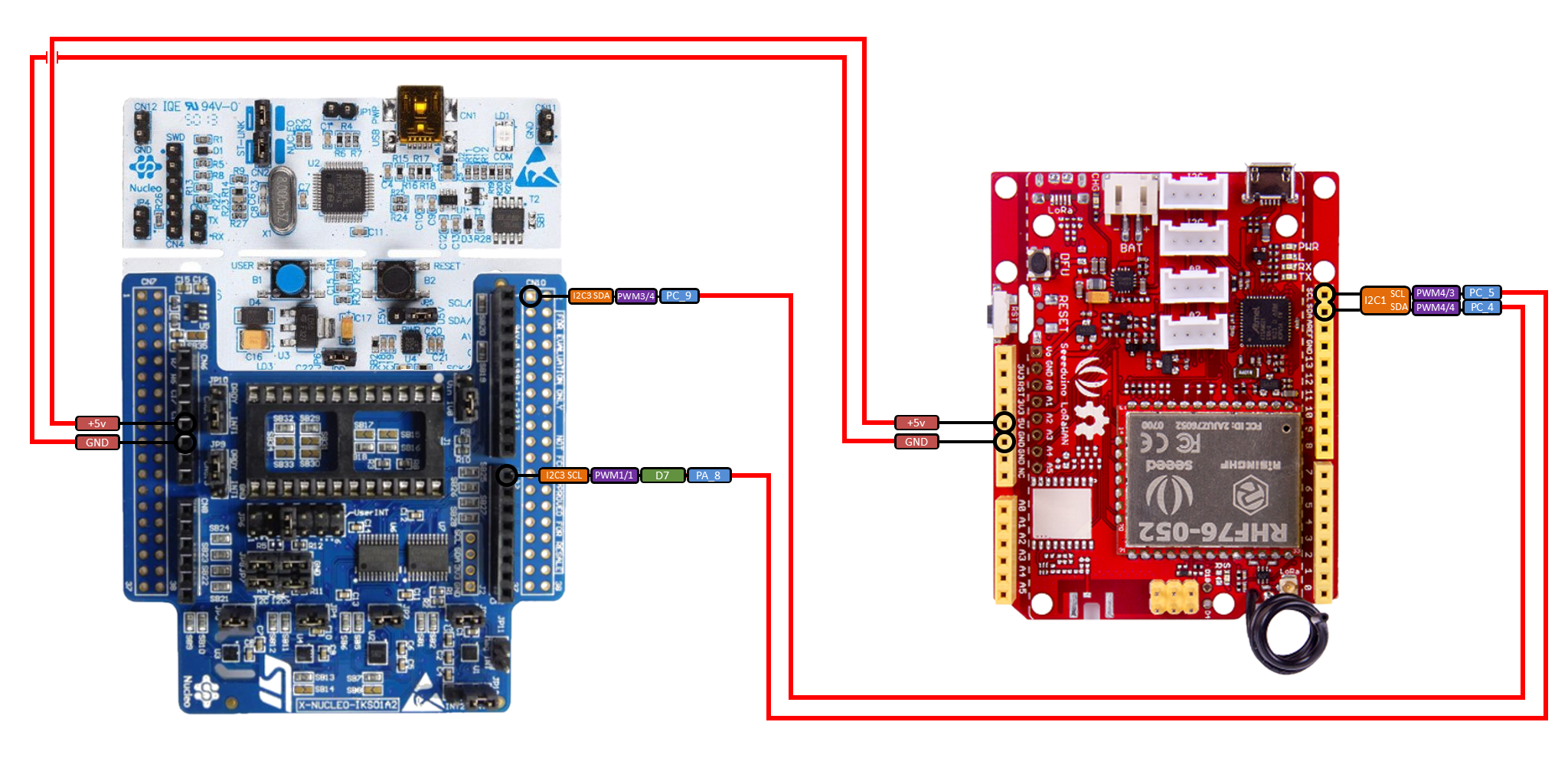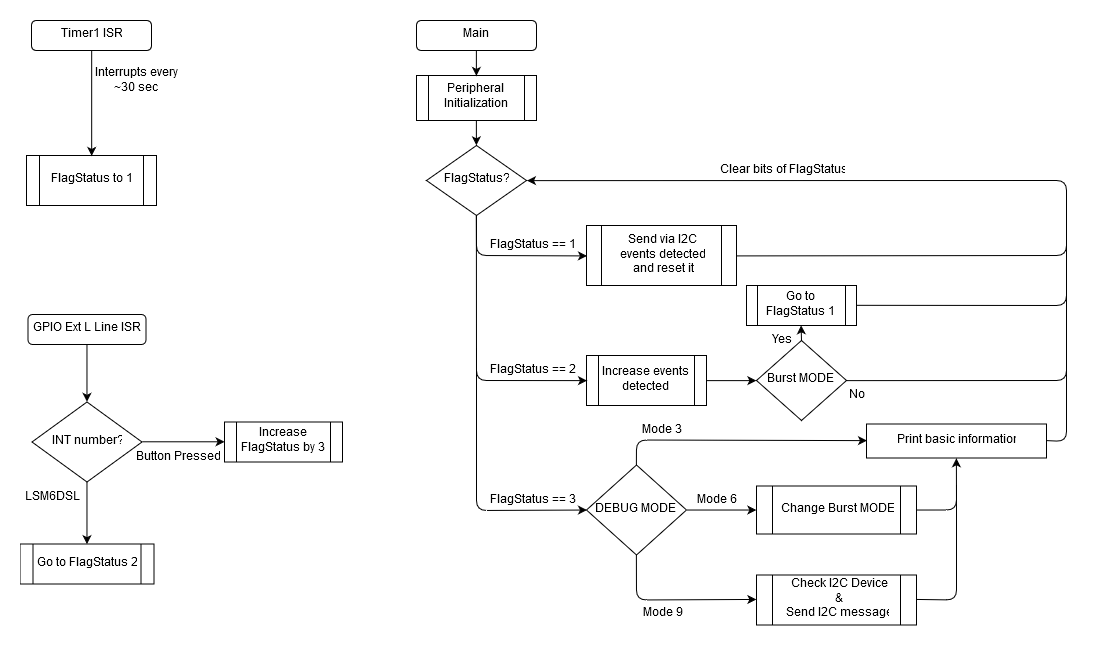This repository contains all information regarding the code of STM32F401RE for the Pothole Detector project.
This board is part of a bigger system, it will be connected to other board via I2C and it will send data through LoRa. The code send via I2C the events detected from LSM6DSL (x-nucleo-iks01a2) accelerometer.
This project was done using a generated code by System Workbench toolchain distributed by STMicroelectronics, you can download the pack here as well as eclipse IDE.
| STM32F401RE (X-NUCLEO-IKS01A2) | Seeeduino LoRaWAN w/ GPS |
|---|---|
| PA8 (I2C3 SCL) | PC5 (SCL) |
| PC9 (I2C3 SDA) | PC4 (SDA) |
| +5V | +5V |
| GND | GND |
- The code contains all libraries used by peripherical modules but make sure you all have a working environment.
- Import the code by manualling clicking right on the Project Explorer
- Build the code and run it.
- If it fails then make sure libraries of X-NUCLEO-IKS01A2 (Drivers/BSP) dependencies are added inside project properties.
You can see basic information of what's happening inside the board.
- LED: if something fails it would flash very quickly (250 ms) infinitively.
- Button: via SERCOM (using Putty, for example) you can view:
| Times button pressed within 1 s | Functionality |
|---|---|
| 1 | Print counted events and timer status |
| 2 | Switch between Burst/Timed mode |
| 3 | Test I2C connection and send events |
- Timed mode means every detected events is stored until a timer interrupts. If Timer interrupts it's sent via I2C to Seeeduino.
- In Burst mode there is no need to wait for the Timer IT so every detected events will be sent instantly to Seeeduino via I2C.
You can view all basic information like detected potholes and low-level processes by uncommenting the DEBUG_MODE define in main.c file and openning a SERIAL/USART terminal monitor.

